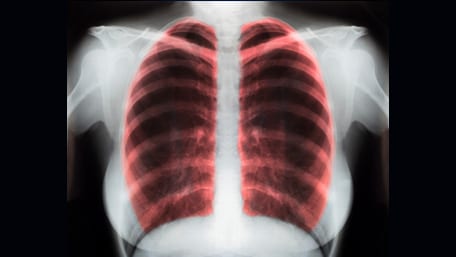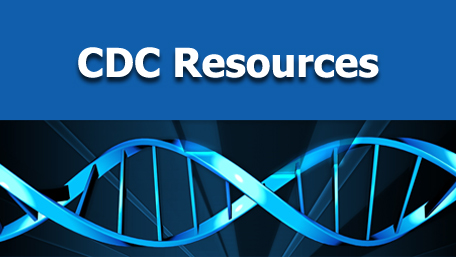J Thorac Oncol. 2016 Nov;11(11):1901-1911. doi: 10.1016/j.jtho.2016.06.025. Epub 2016 Jul 20.
EGFR-GRB2 Protein Colocalization Is a Prognostic Factor Unrelated to Overall EGFR Expression or EGFR Mutation in Lung Adenocarcinoma.
Toki MI1, Carvajal-Hausdorf DE1, Altan M2, McLaughlin J2, Henick B2, Schalper KA3, Syrigos KN4, Rimm DL5.
Abstract
INTRODUCTION:
METHODS:
RESULTS:
CONCLUSIONS:
Copyright © 2016 International Association for the Study of Lung Cancer. Published by Elsevier Inc. All rights reserved.
KEYWORDS:
Adenocarcinoma; EGFR; GRB2; NSCLC; Proximity ligation assay; Quantitative immunofluorescence
- PMID:
- 27449805
- PMCID:
- PMC5075503
- [Available on 2017-11-01]
- DOI:
- 10.1016/j.jtho.2016.06.025
- [PubMed - in process]
Public Health Genomics Knowledge Base (v1.2)


LUNG CANCER

Last Updated: Nov 02, 2016
- The absence of HLA class I expression in non-small cell lung cancer correlates with the tumor tissue structure and the pattern of T cell infiltration.
Perea Francisco, et al. International journal of cancer 2016 10 - Lung Cancer Awareness
- EGFR-GRB2 Protein Colocalization Is a Prognostic Factor Unrelated to Overall EGFR Expression or EGFR Mutation in Lung Adenocarcinoma.
Toki Maria I, et al. Journal of thoracic oncology : official publication of the International Association for the Study of Lung Cancer 2016 11 (11) 1901-1911 - Pathway Targeted Immunotherapy: Rationale and Evidence of Durable Clinical Responses with a Novel, EGF-directed Agent for Advanced NSCLC.
Rosell Rafael, et al. Journal of thoracic oncology : official publication of the International Association for the Study of Lung Cancer 2016 11 (11) 1954-1961 - Polymorphisms and expression of IL-32: impact on genetic susceptibility and clinical outcome of lung cancer.
Wang Yanwen, et al. Biomarkers : biochemical indicators of exposure, response, and susceptibility to chemicals 2016 10 1-23 - Programmed Cell Death Ligand 1 Expression in Resected Lung Adenocarcinomas: Association with Immune Microenvironment.
Huynh Tiffany G, et al. Journal of thoracic oncology : official publication of the International Association for the Study of Lung Cancer 2016 11 (11) 1869-1878 - Association of Uba6-Specific-E2 (USE1) With Lung Tumorigenesis.
Kim Seong-Jin, et al. Journal of the National Cancer Institute 2017 3 (3) - EGFR mutation status of paired cerebrospinal fluid and plasma samples in EGFR mutant non-small cell lung cancer with leptomeningeal metastases.
Zhao Jing, et al. Cancer chemotherapy and pharmacology 2016 10 - [Clinicopathologic Features and Prognostic Implications in 72 Cases ?with Lung Adenosquamous Carcinoma].
Wu Xi, et al. Zhongguo fei ai za zhi = Chinese journal of lung cancer 2016 10 (10) 653-658 - [Driven Gene in Patients with Lung Squamous Cell Carcinoma: ?Analysis of Clinicopathologic Characteristics and Prognosis].
Zhang Tongtong, et al. Zhongguo fei ai za zhi = Chinese journal of lung cancer 2016 10 (10) 648-652 - A phase II open-label multicenter study of gefitinib in combination with irradiation followed by chemotherapy in patients with inoperable stage III non-small cell lung cancer.
Levy Antonin, et al. Oncotarget 2016 10 - Effects of epidermal growth factor receptor-tyrosine kinase inhibitors alone on EGFR-mutant non-small cell lung cancer with brain metastasis.
Zhang Qiuyi, et al. Thoracic cancer 2016 9 - Erratum to: PNA clamping-assisted fluorescence melting curve analysis for detecting EGFR and KRAS mutations in the circulating tumor DNA of patients with advanced non-small cell lung cancer.
Han Ji-Youn, et al. BMC cancer 2016 10 (1) 803 - Quantification of epidermal growth factor receptor (EGFR) mutation may be a predictor of EGFR-tyrosine kinase inhibitor treatment response.
Park Ha Young, et al. Thoracic cancer 2016 9 - Study of efficacy and safety of pulsatile administration of high-dose gefitinib or erlotinib for advanced non-small cell lung cancer patients with secondary drug resistance: A single center, single arm, phase II clinical trial.
Zhu Yanzhe, et al. Thoracic cancer 2016 8


- Human (34)
- Pathogen (0)

- Human (4009)
- Pathogen (0)

- Human (65)
- Pathogen (0)


- Huamn (4)
- Pathogen (0)






















.png)











No hay comentarios:
Publicar un comentario